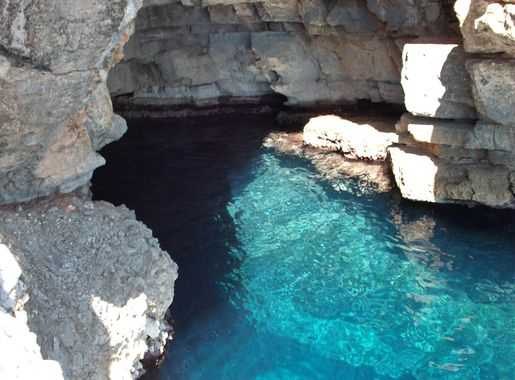
Mljet Island: Croatia's Hidden Gem
Discover Mljet Island: A Croatian paradise with lush forests, saltwater lakes, and a rich cultural heritage perfect for nature lovers and history enthusiasts.
Mljet Island is a lush paradise located in the Adriatic Sea, known for its serene beauty and untouched nature. As one of the most enchanting islands in Croatia, Mljet offers a unique blend of natural landscapes, crystal-clear waters, and rich cultural history. Upon arriving, visitors are greeted by verdant forests, pristine beaches, and charming villages that create a tranquil escape from the hustle and bustle of modern life. The island is home to the Mljet National Park, which covers the western part of the island and includes two saltwater lakes, Veliko and Malo Jezero. These lakes are perfect for swimming, kayaking, and enjoying the stunning views. Within the park, the small island of St. Mary holds a 12th-century Benedictine monastery, providing a glimpse into the island's historical and spiritual heritage. For those who love hiking and cycling, Mljet offers numerous trails that meander through dense forests and along the coastline, offering breathtaking views at every turn. The island's underwater world is equally captivating, making it a popular spot for diving and snorkeling. Local cuisine features fresh seafood and traditional Croatian dishes, which can be enjoyed in cozy restaurants and konobas (taverns) scattered across the island.
Local tips in Mljet Island
- Visit during the shoulder seasons (May-June or September-October) for fewer crowds and pleasant weather.
- Bring comfortable walking shoes for exploring the island's numerous hiking and cycling trails.
- Rent a kayak or bike to fully experience Mljet National Park's stunning natural beauty.
- Try the local seafood dishes, especially the octopus salad and fresh fish.
- Consider staying in a local guesthouse or villa to immerse yourself in the island's relaxed atmosphere.
Mljet Island: Croatia's Hidden Gem
Mljet Island is a lush paradise located in the Adriatic Sea, known for its serene beauty and untouched nature. As one of the most enchanting islands in Croatia, Mljet offers a unique blend of natural landscapes, crystal-clear waters, and rich cultural history. Upon arriving, visitors are greeted by verdant forests, pristine beaches, and charming villages that create a tranquil escape from the hustle and bustle of modern life. The island is home to the Mljet National Park, which covers the western part of the island and includes two saltwater lakes, Veliko and Malo Jezero. These lakes are perfect for swimming, kayaking, and enjoying the stunning views. Within the park, the small island of St. Mary holds a 12th-century Benedictine monastery, providing a glimpse into the island's historical and spiritual heritage. For those who love hiking and cycling, Mljet offers numerous trails that meander through dense forests and along the coastline, offering breathtaking views at every turn. The island's underwater world is equally captivating, making it a popular spot for diving and snorkeling. Local cuisine features fresh seafood and traditional Croatian dishes, which can be enjoyed in cozy restaurants and konobas (taverns) scattered across the island.
When is the best time to go to Mljet Island?
Iconic landmarks you can’t miss
Mljet National Park
Explore the serene beauty of Mljet National Park, where crystal-clear lakes and lush forests create a paradise for nature enthusiasts in Croatia.

Odysseus Cave
Explore Odysseus Cave on the enchanting island of Mljet, where myth meets stunning natural beauty in Croatia's breathtaking landscapes.
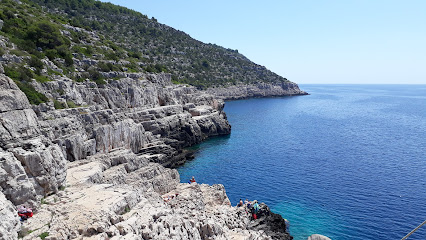
Mljet
Explore the untouched beauty and rich history of Mljet Island, a serene paradise in Croatia perfect for nature lovers and adventurers.
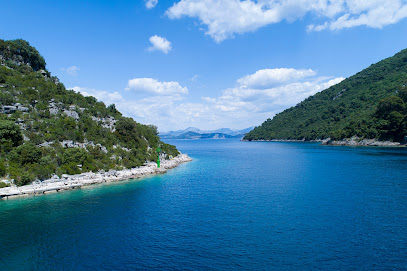
Saint Mary's Island
Explore the serene beauty of Saint Mary's Island, a national reserve in Croatia, offering stunning landscapes, diverse wildlife, and tranquil beaches.

Mali most
Discover Mali Most, a picturesque bridge in Goveđari, where stunning natural beauty meets rich cultural heritage.
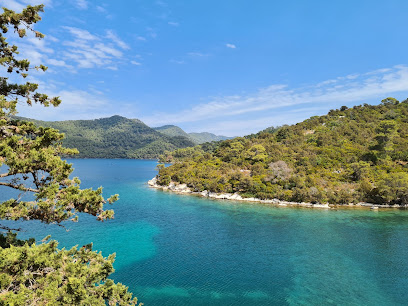
Plaža Sutmiholjska
Experience the tranquility of Plaža Sutmiholjska, a serene public bath on the Croatian coast with crystal-clear waters and stunning landscapes.
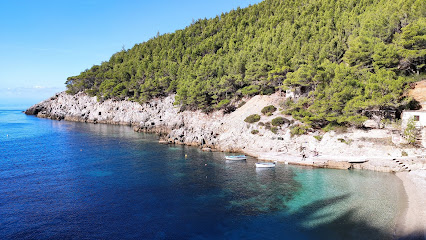
Tommy
Explore the charm of Sobra at Tommy Supermarket, where local delights and fresh produce await every traveler.
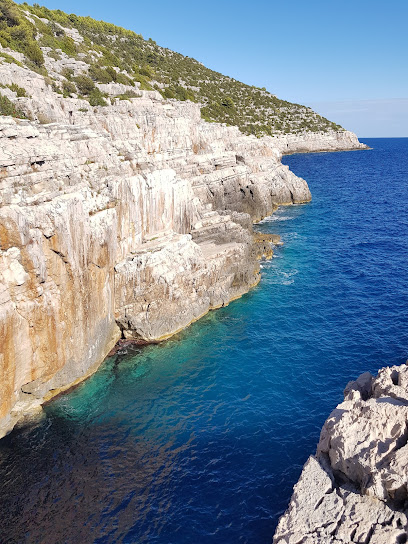
Plaža Limuni
Discover the tranquility of Plaža Limuni, a stunning beach on Mljet Island, perfect for relaxation and natural exploration.
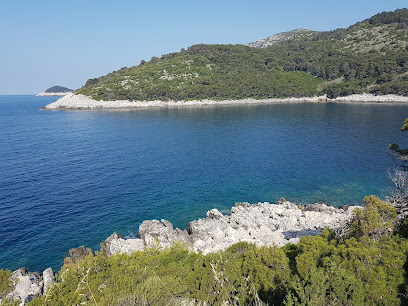
National park Mljet entrance and ticket stand
Experience the breathtaking landscapes and rich biodiversity of National Park Mljet, a must-visit destination for nature lovers in Croatia.
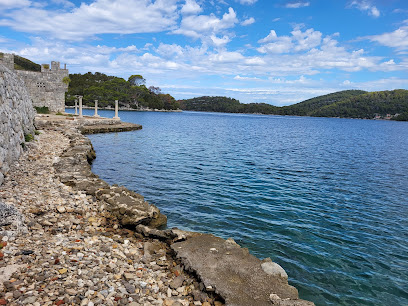
Villa Radulj
Experience the idyllic charm of Villa Radulj in Kozarica, Croatia, where comfort and nature converge for an unforgettable stay.

Mini Brum
Discover the stunning island of Mljet with Mini Brum Car Rentals, your key to unforgettable adventures in Croatia's natural paradise.
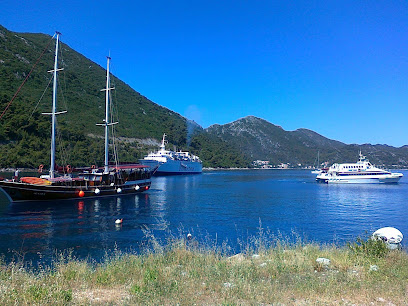
BOUTIQUE PINE TREE RESORT LUXURY Aparments & RESTAURANT
Discover the luxurious charm of Boutique Pine Tree Resort on Mljet Island, where stunning views and exquisite dining await you.
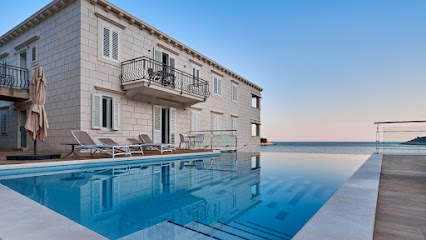
Velika Saplunara
Experience the tranquil beauty of Velika Saplunara, Croatia's hidden gem with serene public baths and pristine beaches.

Mala Saplunara
Mala Saplunara: A serene public bath on Mljet Island, where crystal-clear waters and sandy shores create the perfect getaway for relaxation.
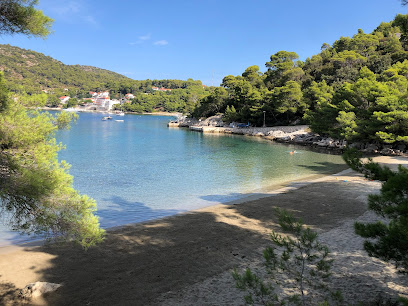
Malo jezero
Experience the tranquil beauty of Malo Jezero, a stunning lake in Croatia, perfect for nature lovers and adventure seekers alike.
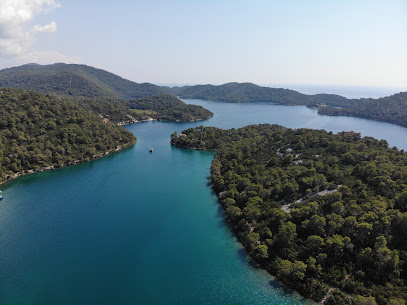
Unmissable attractions to see
Apparition Hill
Experience the spiritual journey and breathtaking views at Apparition Hill, a cherished pilgrimage site in Bijakovići, Bosnia and Herzegovina.

Dubrovnik Walks
Experience the magic of Dubrovnik with expertly guided tours that unveil the city's history, culture, and breathtaking scenery.
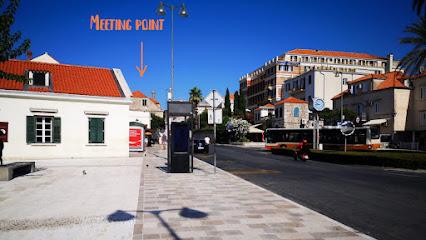
Cave Bar More
Experience the enchanting Cave Bar More in Dubrovnik, where stunning sea views and a unique cave ambiance await your visit.
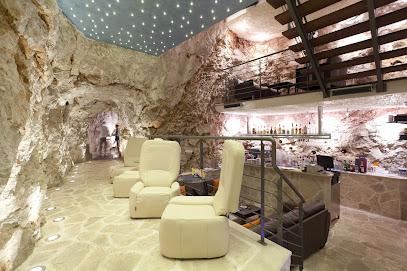
Počitelj Fortress
Experience the majestic Počitelj Fortress, a historic gem in Bosnia and Herzegovina, offering stunning views and a glimpse into the past.
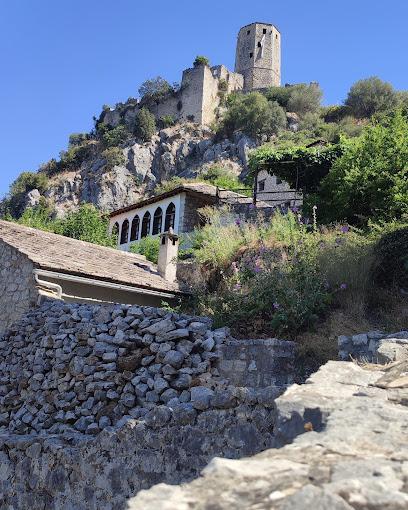
Red History Museum
Explore Croatia's vibrant past at the Red History Museum in Dubrovnik, where engaging exhibits bring history to life through interactive storytelling.

National park Mljet entrance and ticket stand
Explore the breathtaking landscapes and rich history of National Park Mljet, a serene retreat on Croatia's enchanting island.

Marlais Winery
Explore the enchanting Marlais Winery in Boljenovići, Croatia, where exquisite wines and stunning landscapes create a memorable experience.
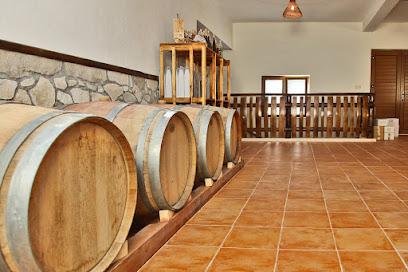
Bire winery
Explore the enchanting Bire Winery in Lumbarda, where tradition meets exquisite Croatian wines amidst stunning coastal views.
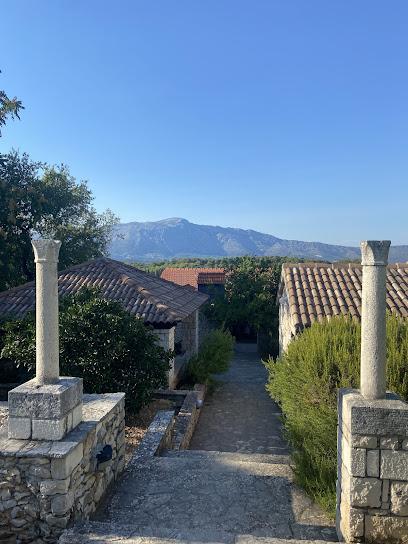
Tasovac winery
Discover the exquisite flavors of Tasovac Winery in Korčula, where tradition meets sustainability in every sip of fine wine.
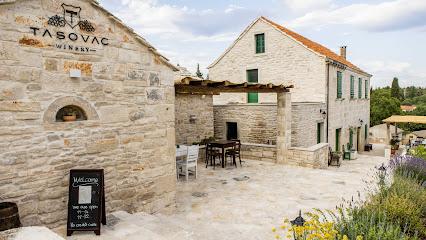
Upper Corner Tower Foundry Museum
Discover the rich history of Dubrovnik at the Upper Corner Tower Foundry Museum, where art and architecture meet in a stunning medieval setting.
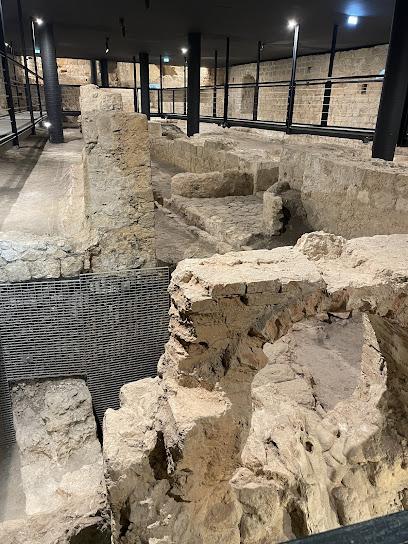
Rimska palača
Explore Rimska palača, a stunning Roman palace in Polače, Croatia, and immerse yourself in the rich history and captivating architecture of the ancient world.
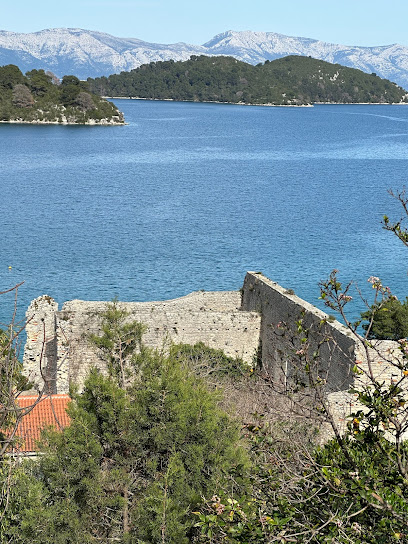
Kolocep Lighthouse
Experience the breathtaking views and rich maritime history at Kolocep Lighthouse, a must-visit historical landmark on Kolocep Island.
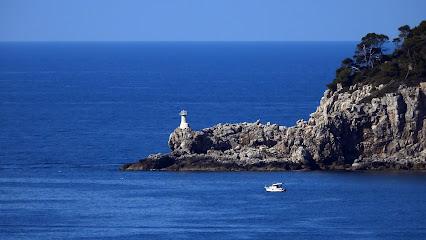
Zaton Water Sports
Explore the stunning Adriatic coastline with thrilling water sports and boat rentals at Zaton Water Sports in Dubrovnik.
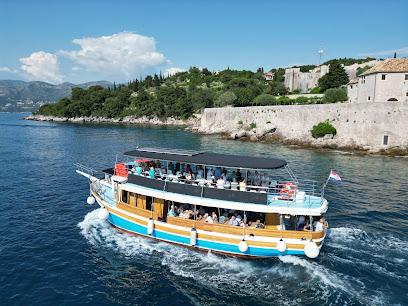
Viewpoint
Discover the stunning Pomena Viewpoint, where breathtaking Adriatic views and serene landscapes create an unforgettable experience for every traveler.
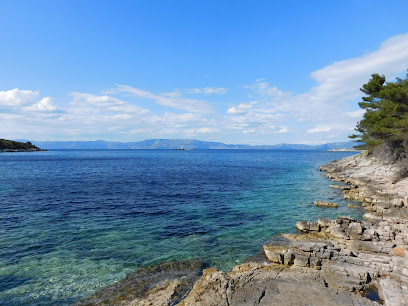
Klačna luka
Experience the serene beauty and rich culture of Klačna Luka, a hidden gem on Croatia's stunning coastline, perfect for relaxation and adventure.
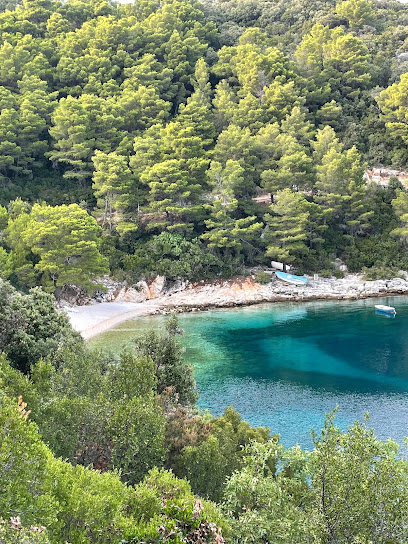
Essential places to dine
Caffe pizzeria Komarac
Discover Caffe Pizzeria Komarac in Babino Polje for an unforgettable pizza experience amidst Croatia's stunning landscapes.
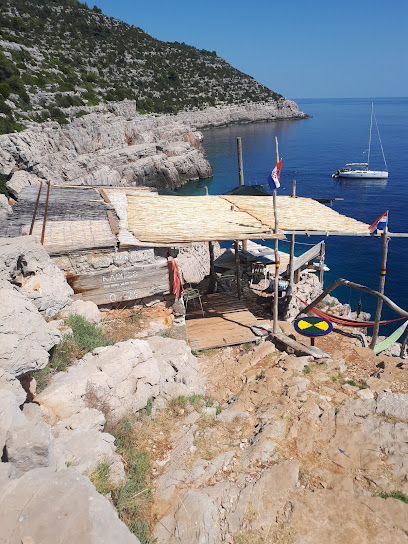
Konoba Riva
Experience authentic Croatian cuisine with stunning sea views at Konoba Riva in Sobra.

Marijina Konoba
Experience authentic Croatian cuisine and stunning coastal views at Marijina Konoba in Prožurska Luka.

MS Restaurant
Savor the rich flavors of traditional Croatian cuisine at MS Restaurant in Saplunara – where every dish tells a story.
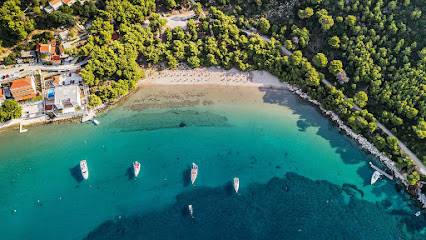
Konoba Stermasi
Experience authentic Croatian cuisine at Konoba Stermasi in Saplunara – where tradition meets stunning views.
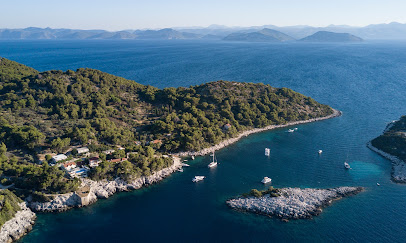
Restoran Maestral
Experience authentic Croatian cuisine at Restoran Maestral in Okuklje with breathtaking views and exceptional service.
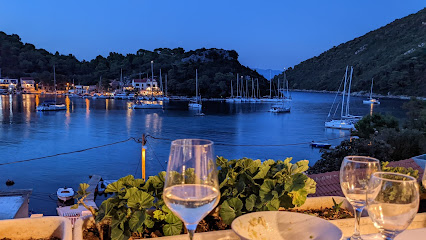
Konoba Herc
Savor authentic Croatian flavors at Konoba Herc in Goveđari - your destination for exquisite seafood and Mediterranean delights.
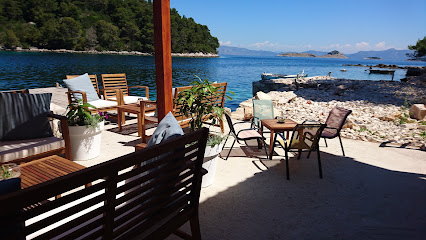
Tavern Barba
Discover Tavern Barba on Otok Mljet - where Mediterranean flavors meet breathtaking views in a charming coastal setting.
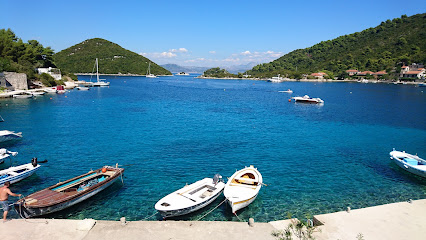
Konoba Antika
Experience authentic Dalmatian flavors at Konoba Antika in Polače - where every dish tells a story.
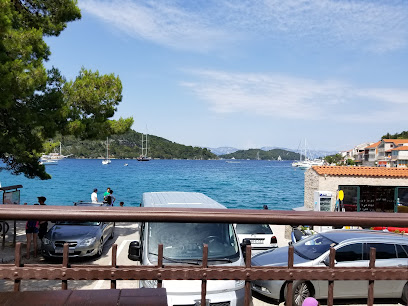
Konoba Ribar
Experience fresh seafood delights at Konoba Ribar in Pomena - where local flavors meet breathtaking Adriatic views.
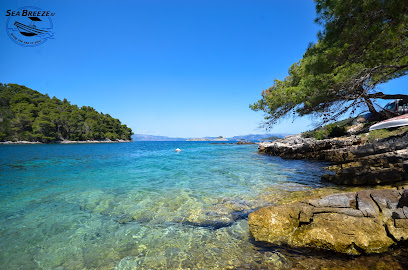
Agroturizam Dalmatino
Experience authentic Croatian cuisine at Agroturizam Dalmatino in Pomena – where local flavors meet warm hospitality.
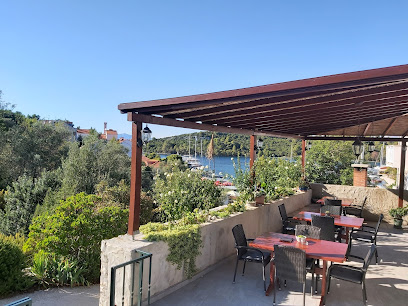
Konoba Lanterna
Discover authentic Croatian cuisine at Konoba Lanterna in Sobra - where fresh ingredients meet traditional recipes.
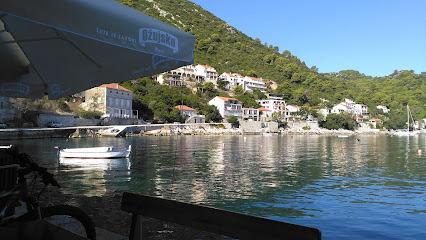
Restaurant Melita
Discover traditional Croatian cuisine at Restaurant Melita in Goveđari—where every dish tells a story and flavors come alive.
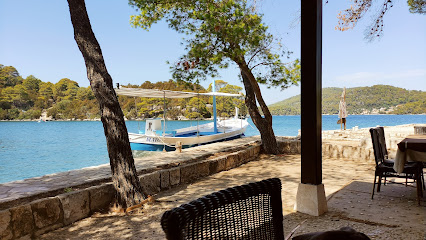
Konoba Barba Ive
Experience authentic Croatian cuisine at Konoba Barba Ive in Pomena – where local flavors meet warm hospitality.
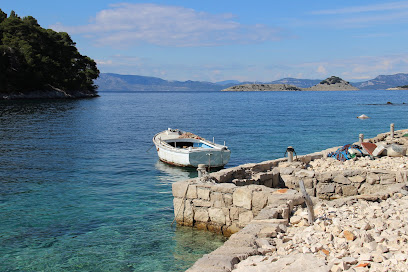
Restoran Pizzeria Adriatic
Experience authentic Mediterranean cuisine at Restoran Pizzeria Adriatic in Pomena - where fresh flavors meet stunning views.
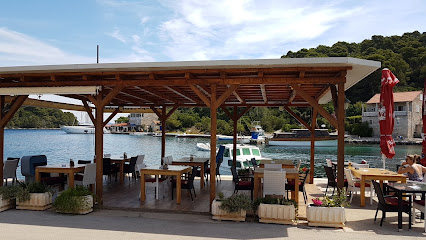
Markets, malls and hidden boutiques
Mljet National Park
Explore the stunning landscapes of Mljet National Park, a Croatian gem with serene lakes, lush forests, and rich history waiting to be discovered.
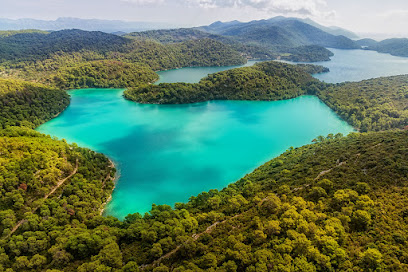
Odysseus Cave
Explore the mystical Odysseus Cave, where stunning turquoise waters meet ancient legends along the picturesque Croatian coastline.
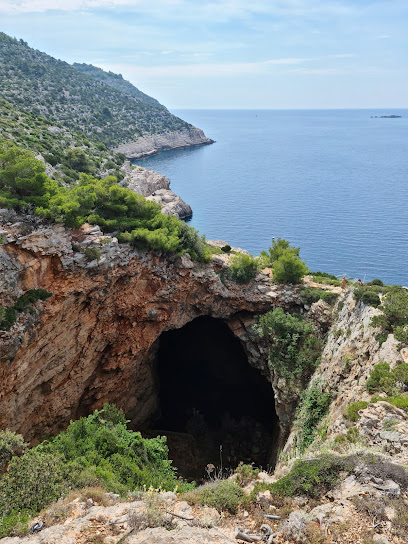
Mali Raj - Mljet | Apartments and Restaurant
Experience the flavors of Mljet at Mali Raj, where exquisite barbecue meets breathtaking island adventures.
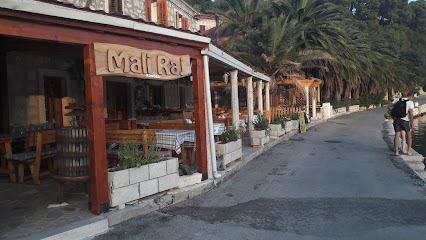
Tommy
Discover the best of local produce and essentials at Tommy Supermarket in Sobra, your gateway to authentic Croatian flavors.
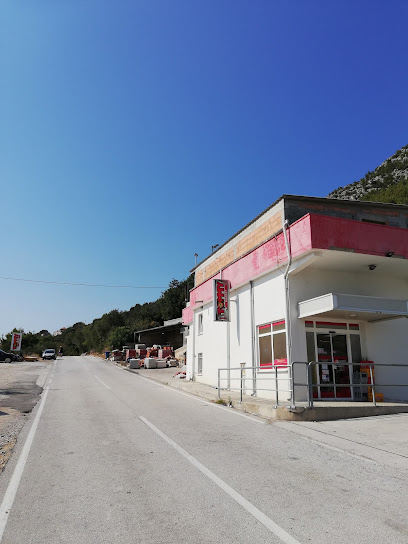
Plaža Limuni
Experience the natural beauty and tranquility of Plaža Limuni, a pristine beach on Mljet Island perfect for relaxation and adventure.
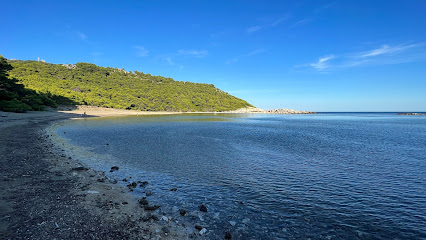
Mini Brum
Explore the enchanting island of Mljet with Mini Brum Car Rentals, your gateway to adventure and scenic beauty.
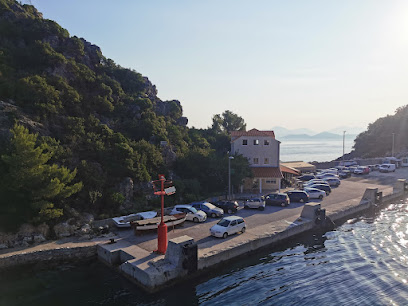
BOUTIQUE PINE TREE RESORT LUXURY Aparments & RESTAURANT
Experience the elegance of the Boutique Pine Tree Resort on Mljet Island, where luxury meets the beauty of nature and local culture.
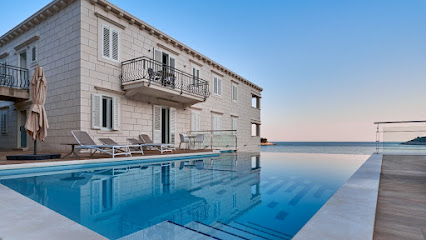
Velika Saplunara
Discover the serene beauty of Velika Saplunara, a Croatian coastal paradise with pristine beaches and tranquil waters perfect for relaxation and exploration.
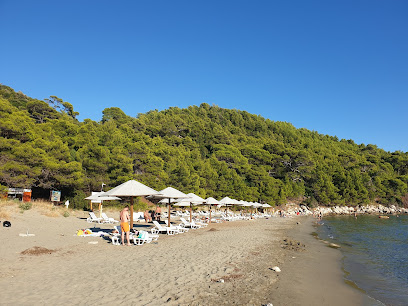
Mala Saplunara
Explore the tranquil beauty of Mala Saplunara, a serene public bath destination in Croatia with stunning beaches and lush landscapes.
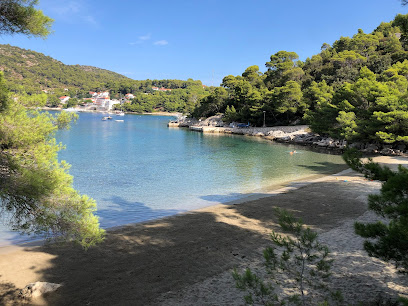
The island of Mljet
Explore the breathtaking landscapes and rich biodiversity of Mljet Island, Croatia’s hidden gem, offering tranquil lakes and stunning wildlife.
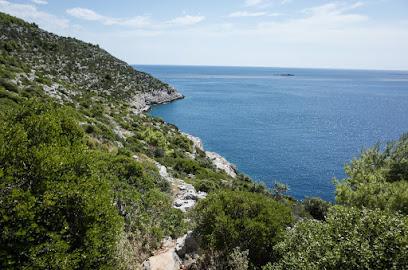
Pivac
Explore Pivac in Janjina for fresh local produce and authentic Croatian products, perfect for any culinary adventure!
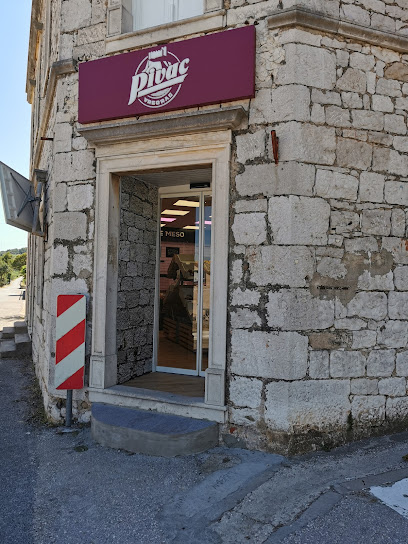
Pekara Mljet
Discover the flavors of Mljet at Pekara Mljet, where traditional baking meets local charm in Polače.
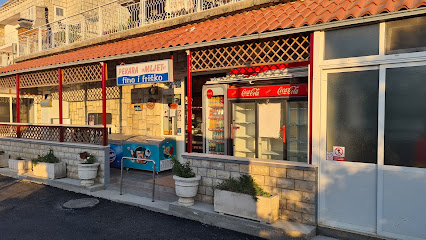
STUDENAC MARKET
Explore the delightful offerings of Studenac Market in Janjina, where local flavors and friendly service come together for an unforgettable shopping experience.

Pace Souvenir Gift Shop
Explore Koločep's Pace Souvenir Gift Shop for unique local crafts and friendly service, the perfect stop for memorable souvenirs.
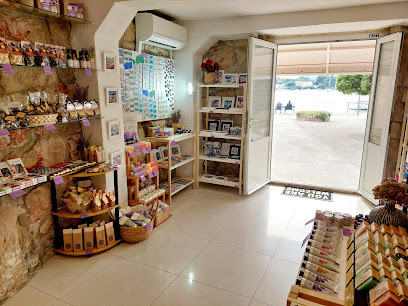
Suvenirnica Rusulica
Discover authentic Croatian souvenirs at Suvenirnica Rusulica, where local craftsmanship meets cultural heritage in the heart of Suđurađ.
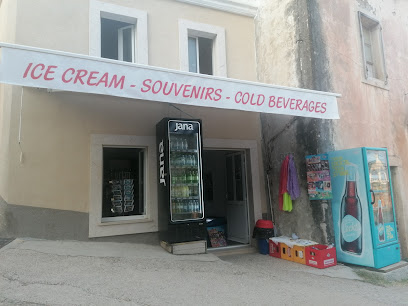
Essential bars & hidden hideouts
Caffe pizzeria Komarac
Experience the taste of authentic Italian pizza at Caffe Pizzeria Komarac in Babino Polje, where culinary tradition meets local flavors.
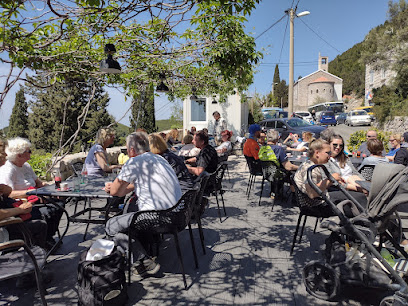
Marijina Konoba
Discover the culinary treasures of Mljet Island at Marijina Konoba, where local flavors meet breathtaking Adriatic views.
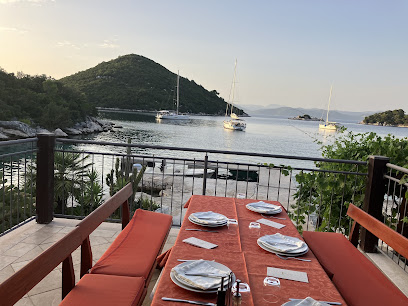
Konoba Stermasi
Experience authentic Croatian cuisine at Konoba Stermasi in Saplunara, where tradition meets flavor in a stunning coastal setting.
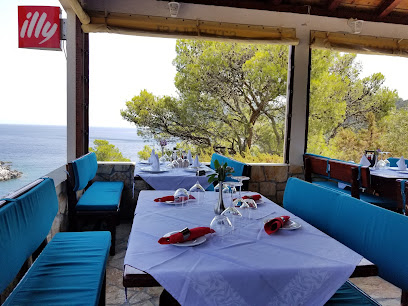
Restoran Maestral
Experience the authentic flavors of Croatia at Restoran Maestral, a culinary haven in beautiful Okuklje, perfect for every food lover.
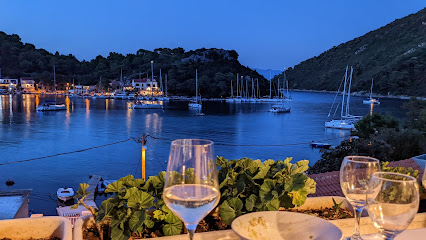
Konoba Herc
Discover the authentic flavors of Croatia at Konoba Herc, a charming restaurant in Goveđari offering exquisite seafood and Mediterranean cuisine.
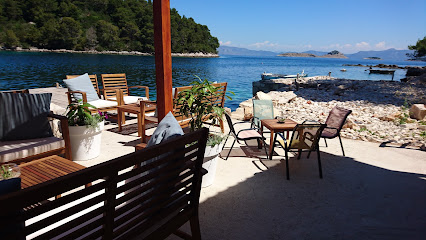
Konoba Maran
Experience the authentic flavors of the Mediterranean at Konoba Maran in Okuklje, where every meal is a celebration of local culinary traditions.
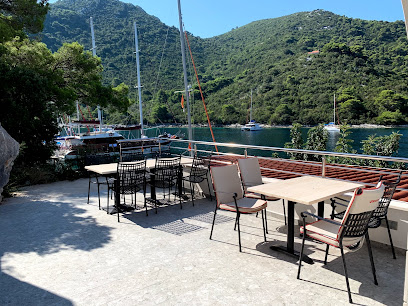
Konoba Antika
Experience authentic Croatian cuisine at Konoba Antika, a cozy restaurant in Polače, Mljet, perfect for savoring local flavors.
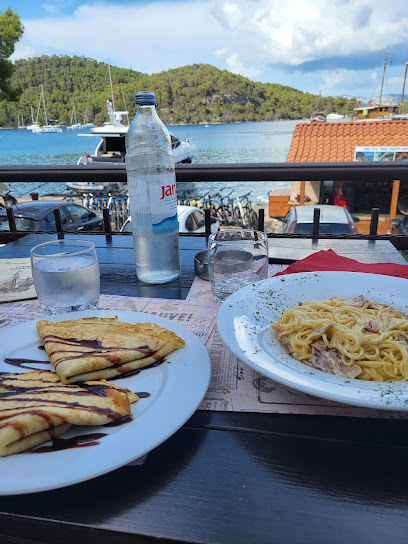
Hippocampus Beach Bar
Experience the perfect blend of relaxation and stunning views at Hippocampus Beach Bar in Saplunara, Croatia.
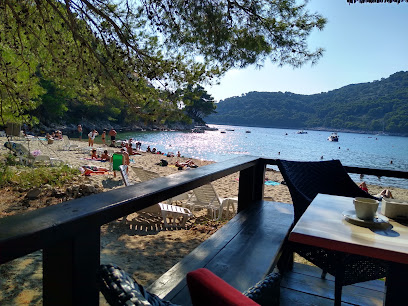
Konoba Lanterna
Experience authentic Croatian dining at Konoba Lanterna in Sobra, a culinary haven showcasing local flavors and fresh ingredients.
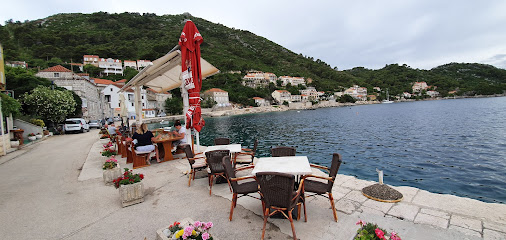
Restaurant Melita
Savor authentic Croatian cuisine at Restaurant Melita, nestled on the beautiful Mljet Island, offering stunning views and a tranquil dining experience.
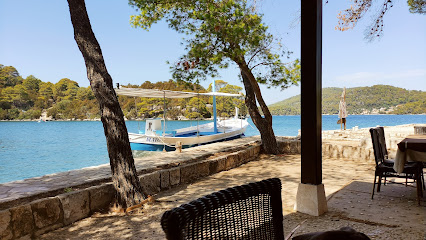
Konoba Barba Ive
Discover authentic Dalmatian flavors at Konoba Barba Ive, where fresh seafood and local traditions come together in a cozy atmosphere.
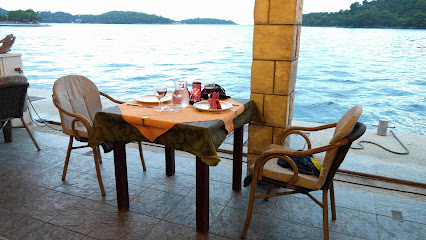
Stella Maris
Experience the authentic taste of Croatia at Stella Maris, a culinary haven in Polače offering exquisite local flavors and stunning coastal views.
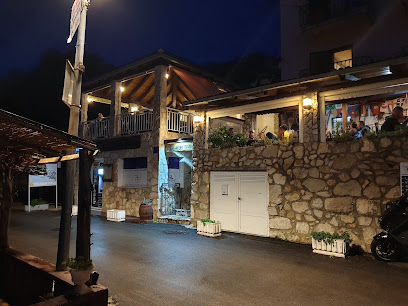
Kod Ante
Experience authentic Dalmatian cuisine at Kod Ante, where fresh flavors and stunning views create unforgettable dining moments.
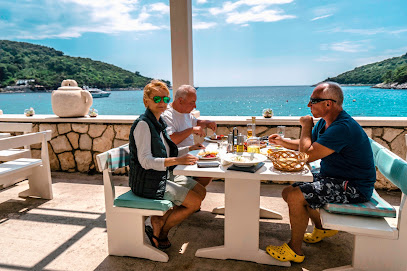
Ogigija Restaurant
Experience the flavors of Croatia at Ogigija Restaurant on Mljet Island, where local dishes and stunning sea views come together.
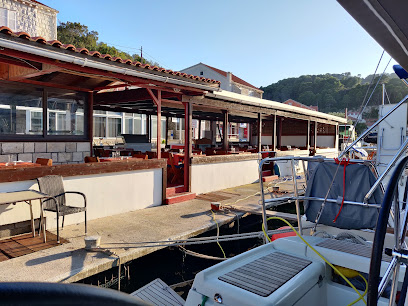
Konoba Baro
Discover the authentic taste of Croatia at Konoba Baro, where fresh local ingredients meet stunning coastal views.

Local Phrases about Mljet Island
-
- HelloBok
[Bohk] - GoodbyeDoviđenja
[Doh-vee-jen-ya] - YesDa
[Da] - NoNe
[Neh] - Please/You're welcomeMolim
[Moh-leem] - Thank youHvala
[Hvah-lah] - Excuse me/SorryOprostite
[O-pros-tee-teh] - How are you?Kako si?
[Kah-koh see] - Fine. And you?Dobro. A ti?
[Doh-bro. Ah tee] - Do you speak English?Govorite li engleski?
[Go-vo-ree-teh lee eng-les-kee] - I don't understandNe razumijem
[Neh rah-zoo-mee-yem]
- HelloBok
-
- I'd like to see the menu, pleaseMolio bih jelovnik, molim
[Moh-lee-oh bee yeh-lohv-neek, moh-leem] - I don't eat meatNe jedem meso
[Neh yeh-dem meh-soh] - Cheers!Živjeli!
[Zhee-vyeh-lee] - I would like to pay, pleaseŽelim platiti, molim
[Zheh-leem pla-tee-tee, moh-leem]
- I'd like to see the menu, pleaseMolio bih jelovnik, molim
-
- Help!Pomoć!
[Poh-mohch] - Go away!Idi dalje!
[Ee-dee dahl-yeh] - Call the Police!Pozovite policiju!
[Poh-zoh-vee-teh po-lee-tsee-yoo] - Call a doctor!Pozovite doktora!
[Poh-zoh-vee-teh dohk-toh-rah] - I'm lostIzgubio/la sam se
[Eez-goo-byoh/lah sahm seh] - I'm illBolestan/na sam
[Boh-leh-stahn/nah sahm]
- Help!Pomoć!
-
- I'd like to buy...Želim kupiti...
[Zheh-leem koo-pee-tee] - I'm just lookingSamo gledam
[Sa-moh gleh-dahm] - How much is it?Koliko košta?
[Koh-lee-koh koh-shta] - That's too expensiveTo je preskupo
[Toh yeh preh-skoo-poh] - Can you lower the price?Možete li spustiti cijenu?
[Moh-zheh-teh lee spoo-stee-tee tsee-yeh-noo]
- I'd like to buy...Želim kupiti...
-
- What time is it?Koliko je sati?
[Koh-lee-koh yeh sah-tee] - It's one o'clockJedan je sat
[Yeh-dahn yeh saht] - Half past (10)Pola (deset)
[Poh-lah (deh-seht)] - MorningJutro
[Yoo-troh] - AfternoonPopodne
[Poh-pohd-neh] - EveningVečer
[Veh-chehr] - YesterdayJučer
[Yoo-cher] - TodayDanas
[Dah-nahs] - TomorrowSutra
[Soo-trah] - 1Jedan
[Yeh-dahn] - 2Dva
[Dvah] - 3Tri
[Tree] - 4Četiri
[Cheh-tee-ree] - 5Pet
[Peh-t] - 6Šest
[Shehst] - 7Sedam
[Seh-dahm] - 8Osam
[Oh-sahm] - 9Devet
[Deh-veht] - 10Deset
[Deh-seht]
- What time is it?Koliko je sati?
-
- Where's a/the...?Gdje je...?
[Gdyeh yeh] - What's the address?Koja je adresa?
[Koh-yah yeh ah-dreh-sah] - Can you show me (on the map)?Možete li mi pokazati (na karti)?
[Moh-zheh-teh lee mee poh-kah-zah-tee (nah kahr-tee)] - When's the next (bus)?Kada je sljedeći (autobus)?
[Kah-dah yeh sl-yeh-deh-chee (ow-toh-boos)] - A ticket (to ....)Jednu kartu (do ....)
[Yeh-dnoo kahr-too (doh)]
- Where's a/the...?Gdje je...?
History of Mljet Island
-
Mljet Island, known in ancient times as Melita, was first mentioned by Greek writers in the 4th century BCE. The Greeks established trading routes and settlements on the island, which became an important stopover for ships navigating the Adriatic Sea. They left behind remnants of their civilization, including pottery and inscriptions, which have been discovered through archaeological excavations.
-
Under Roman rule, Mljet became part of the Roman province of Dalmatia. The Romans built villas and established agricultural estates, exploiting the island's fertile land and strategic maritime position. Notable Roman ruins include the remnants of a Roman palace and a salt works, showcasing the island’s role in the empire's economic network.
-
In the early 12th century, Benedictine monks from Monte Cassino established a monastery on the islet of St. Mary in Mljet's Great Lake. This monastery became a significant center of religious and cultural life, influencing the island's development for centuries. The monastery, with its Romanesque and Gothic architectural elements, still stands today, offering a glimpse into the island’s medieval past.
-
During the 15th and 16th centuries, Mljet was caught between the expanding Ottoman Empire and the maritime Republic of Venice. While the island remained under Venetian control, it experienced frequent raids and incursions by Ottoman forces. This period was marked by the construction of fortifications and the development of Mljet's distinctive stone architecture.
-
After the fall of the Venetian Republic in 1797, Mljet briefly fell under French control during the Napoleonic Wars. In 1815, the island became part of the Austrian Empire, which brought stability and further development. Austrian administration improved infrastructure and promoted agriculture, leaving a legacy of stone houses and roads that are still in use today.
-
Following World War I and the dissolution of the Austro-Hungarian Empire, Mljet became part of the Kingdom of Serbs, Croats, and Slovenes, later known as Yugoslavia. The island saw significant changes during this period, including land reforms and the establishment of new settlements. In 1960, Mljet was designated as a national park, highlighting its natural beauty and biodiversity.
-
Since Croatia gained independence in 1991, Mljet has become an increasingly popular tourist destination. The island's rich history, combined with its pristine natural environment, makes it a unique attraction. Efforts to preserve its historical sites and promote sustainable tourism have been central to Mljet’s modern development.
Mljet Island Essentials
-
Mljet Island is located in the Adriatic Sea, south of the Pelješac Peninsula. The nearest international airports are Dubrovnik Airport (DBV) and Split Airport (SPU). From Dubrovnik, you can take a ferry operated by Jadrolinija or G&V Line to Sobra, Mljet's main port. The journey takes approximately 1.5 to 2 hours. Alternatively, you can take a catamaran from Split to Mljet during the summer months, which takes around 4 hours.
-
Once on Mljet Island, you can get around by bus, taxi, or rental car. Buses connect major settlements like Sobra, Pomena, and Polače. Taxis are available but can be costly. Renting a car, scooter, or bicycle is recommended if you wish to explore the island at your own pace. During the summer, boat rentals are also available for exploring the coastline and nearby islets.
-
The official currency in Croatia is the Croatian Kuna (HRK). Credit cards are widely accepted in hotels, restaurants, and shops on Mljet Island, but it's advisable to carry some cash, especially in smaller establishments. ATMs are available in major settlements like Sobra and Pomena. Currency exchange services are also available in these areas.
-
Mljet Island is generally a very safe destination for tourists. However, it's always wise to take standard precautions such as avoiding isolated areas at night and keeping an eye on your belongings in crowded places. There are no specific high-crime areas targeting tourists on the island.
-
In case of emergency, dial 112 for immediate assistance, which is the general emergency number in Croatia. There are medical centers in Babino Polje and Sobra for non-critical health issues. It's advisable to have travel insurance that covers medical emergencies. Pharmacies are available in larger settlements for minor health issues and over-the-counter medications.
-
Fashion: Do wear casual and comfortable clothing suitable for outdoor activities. Avoid overly flashy or revealing attire. Religion: Do respect local customs and traditions, especially when visiting religious sites. Dress modestly and be quiet. Public Transport: Do be respectful and considerate of other passengers. Don't eat or drink on public transport. Greetings: Do greet people with a friendly 'Dobar dan' (Good day) or a simple 'Hello.' A handshake is common. Eating & Drinking: Do try local dishes and seafood. Don't refuse food or drink offered by locals, as it can be considered impolite.
-
To experience Mljet Island like a local, visit the local markets where you can buy fresh produce and local delicacies. Engage with the locals, who are often friendly and willing to share stories about the island's history and culture. Don't miss visiting the Mljet National Park, which offers beautiful lakes and scenic trails. Renting a kayak or bike to explore the park is highly recommended. For a unique experience, take a boat trip to the small island of Sveta Marija in Veliko Jezero, home to a historic Benedictine monastery.
Trending Landmarks in Mljet Island
Nearby Cities to Mljet Island
-
Things To Do in Trebinje
-
Things To Do in Mostar
-
Things To Do in Makarska
-
Things To Do in Hvar
-
Things To Do in Herceg Novi
-
Things To Do in Perast
-
Things To Do in Tivat
-
Things To Do in Kotor
-
Things To Do in Nikšić
-
Things To Do in Budva
-
Things To Do in Cetinje
-
Things To Do in Split
-
Things To Do in Trogir
-
Things To Do in Sarajevo
-
Things To Do in Podgorica


